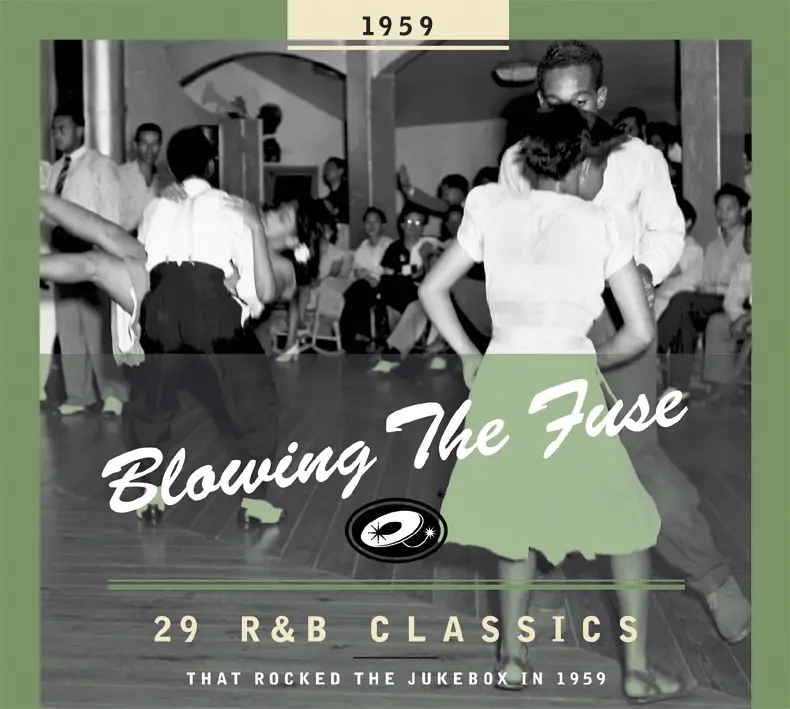Who was/is Ray Charles & Friends ? - CDs, Vinyl LPs, DVD and more
Ray Charles and his Orchestra
What'd I Say, Parts 1 & 2
Ray Charles and his Orchestra
What'd I Say, Parts 1 & 2
"We happened to be playing one of my last dances somewhere in the Midwest," wrote Charles in his autobiography, "I had another twelve minutes to kill before the set closed...It was nearly 1:00am and we had played our whole book. There was nothing left I could think of, so I finally said to the band and the Rae-lets, 'Listen, I'm going to fool around and y'all just follow me'. So I began noodling. Just a little riff which floated up into my head. It felt good and I kept on going. One thing led to another and suddenly I found myself singing and wanting the girls to repeat after me. So I told 'em 'Now!' Then I could feel the whole room bouncing and shaking and carrying on something fierce so I kept the thing going, tightening it up a little here, adding a dash of Latin rhythm there. When I got through, folk came up and asked where they could buy the record. 'Ain't no record,' I said. 'Just something I made up to kill a little time.'"
Charles continued to experiment with his riff, adding lyrics and Latin percussion, until he came to New York on February 18, 1959 to record. He arrived with a new Wurlitzer electric piano that he was using on live gigs to counteract the unreliable house pianos. Atlantic's chief engineer, Tom Dowd, takes up the saga: "Back then there was still some controversy about content and intent with regard to sexual meaning. I mixed ‘What'd I Say’ three times. In mixing it the first time I mixed it to two-track and mono. I edited out a lot. They wanted some of the more suggestive parts out so I scissored it and resequenced the recording. We also needed to make it shorter because the record could have gone on for ten minutes." As a device to bridge parts one and two for single release, Ray simulated a live performance. He stopped, faded and re-started over the Rae-lets exhorting him to continue as he feigned reluctance. It was a little contrived but it fit the bill.
Despite Dowd's editing, part two was still fairly suggestive. "I'm not one to interpret my own songs," said Charles, "but if you can't figure out ‘What'd I Say’ then something's wrong. Either that or you're not accustomed to the sweet sounds of love." Despite its overt sexuality and the fact that it could not be pigeonholed as rock ‘n’ roll, pop, R&B or Latin, drawing as it did from all those, What’d I Say became a massive pop hit, peaking at #6 on the pop charts and #1 on the R&B charts. It gave Ray Charles his first million seller. Charles complained in his autobiography that the cover versions were not banned as his had been, but there were no significant cover versions. Jerry Lee Lewis revived the song in 1961, omitting the grunts and shrieks, but in 1959 Charles had the field to himself. The bad news for Atlantic Records was that Charles was almost out the door. The good news for Ray Charles was that he opened negotiations with other labels just as What’d I Say was peaking.
Various - Blowing The Fuse 1959
Classics That Rocked The Jukebox
Read more at: https://www.bear-family.de/various-blowing-the-fuse-1959-classics-that-rocked-the-jukebox.html
Copyright © Bear Family Records
Copyright © Bear Family Records®. Copying, also of extracts, or any other form of reproduction, including the adaptation into electronic data bases and copying onto any data mediums, in English or in any other language is permissible only and exclusively with the written consent of Bear Family Records® GmbH.
More information about Ray Charles & Friends on Wikipedia.org

